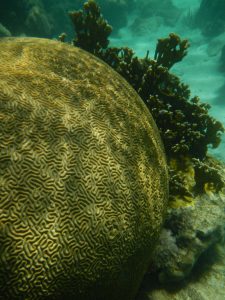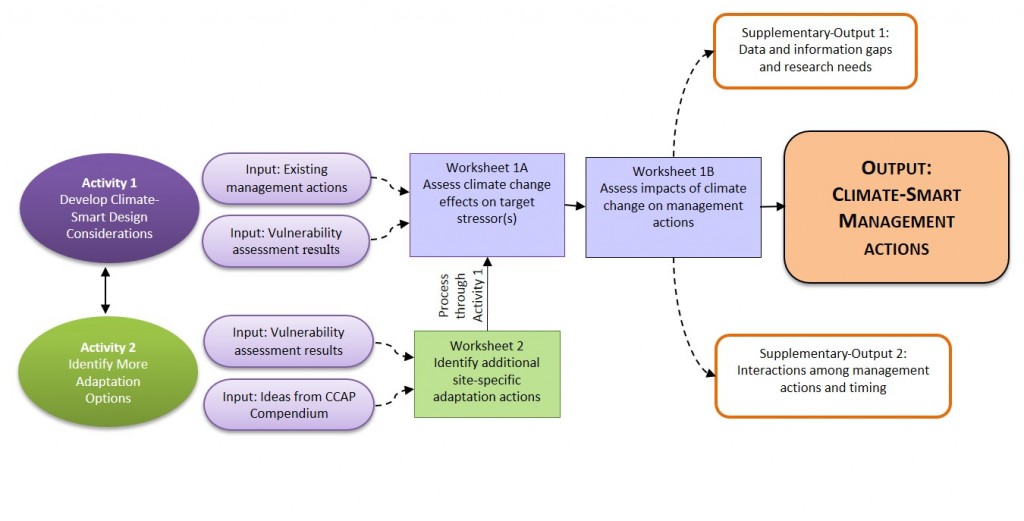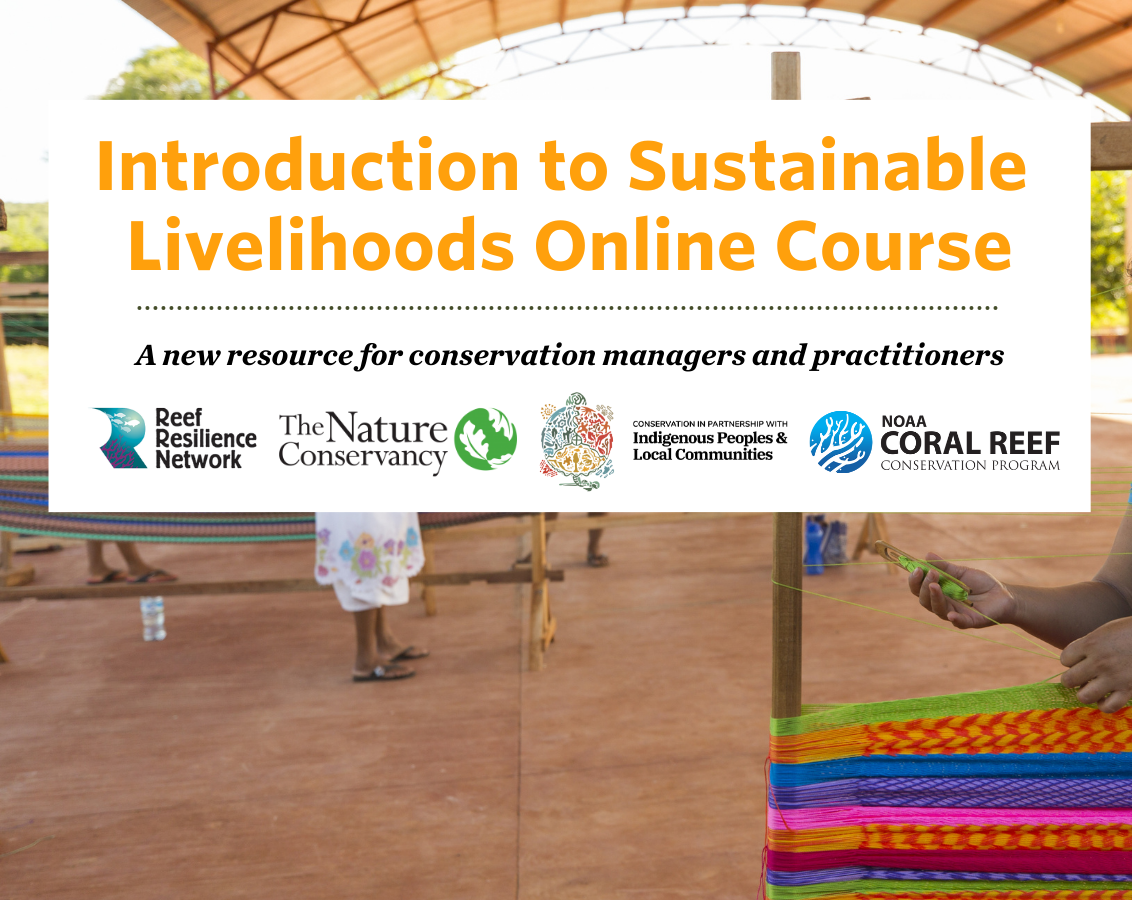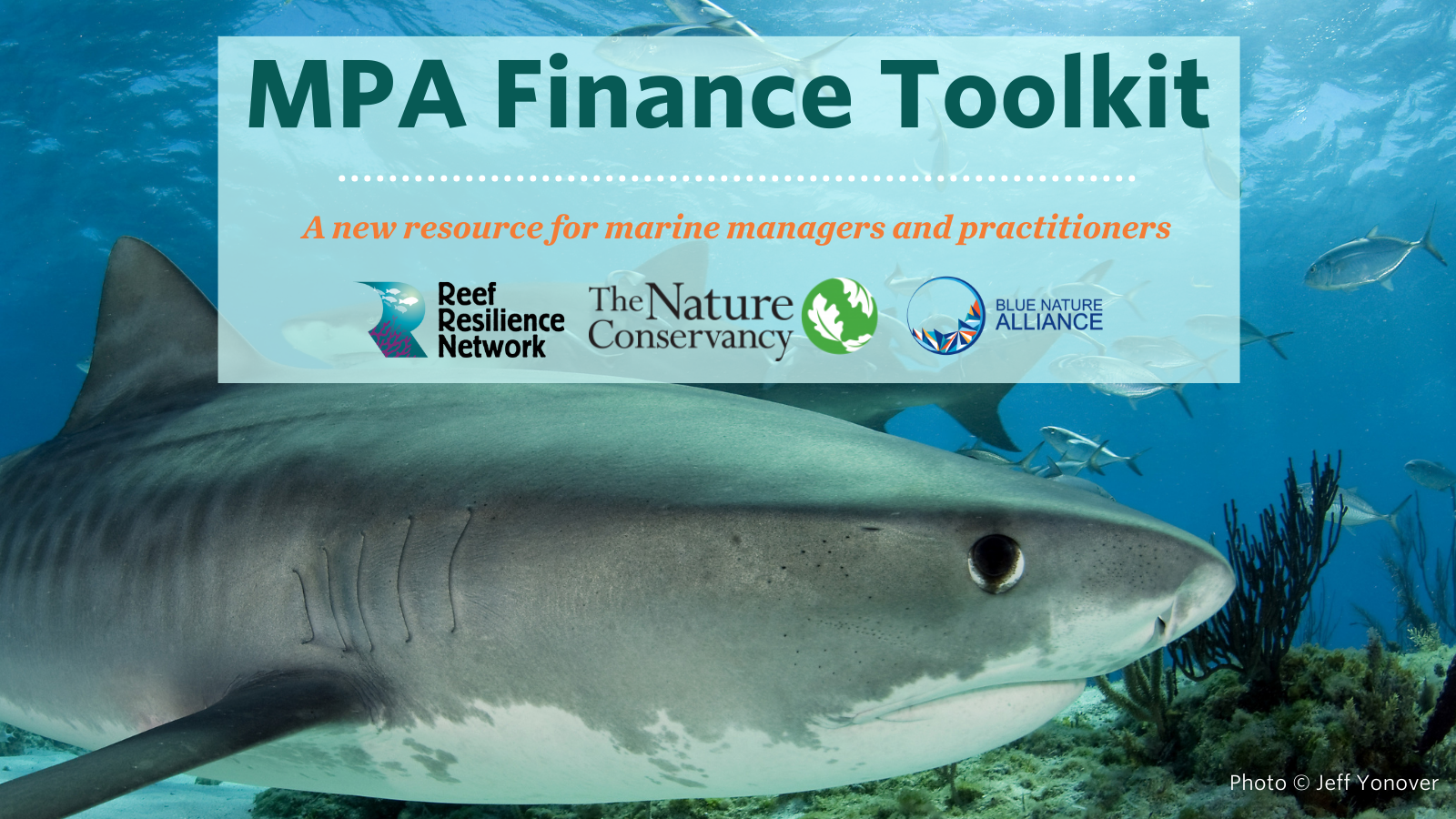Climate-Smart Coral Reef and Watershed Management Using the Adaptation Design Tool in Guánica Bay Watershed, Puerto Rico
Location
Guánica Bay watershed and adjacent reefs, Puerto Rico, United States
The challenge

Coral reef in Puerto Rico. Photo © Kemit-Amon Lewis
Climate change is expected to adversely impact watershed and downstream coral reef health in many ways in southwest Puerto Rico. These changes will likely compound existing and future ecosystem degradation. Management actions for coral reefs considered or implemented so far have generally focused on existing, local stressors without incorporating climate change’s effects. Unfortunately, management actions designed to handle historical conditions may not perform as well as intended under climate change, and even which actions are prioritized for implementation may be altered by climate change. Thus, the challenge is systematically and transparently designing climate-smart watershed and coral reef management actions.
Actions taken
The Adaptation Design Tool (the Design Tool) helps coral reef managers incorporate climate-smart design into their management activities by considering the effects of climate change on ecosystem stressors and implications for effective management. The Design Tool consists of a series of activities (see diagram below) with worksheets that are used to (a) identify climate change impacts on the effectiveness of your management actions and consider what changes should be made to the actions based on those impacts, and (b) identify gaps in an existing plan and brainstorm new actions to fill those gaps.

The Adaptation Design Tool flow chart shows the activities in the Design Tool and the progression to climate-smart management actions (from Adaptation Design Tool: Corals and Climate Adaptation Planning).
Management action pre-screening
To prepare for using the Adaptation Design Tool, the Puerto Rico team had to decide which management actions to focus on. To do that, they compiled a list of potential Guánica Bay watershed and reef management actions from multiple sources: the previous watershed management plan (Center for Watershed Protection 2008), local workshops and forums, and discussions with local watershed managers. This final list contained only specific, discrete actions that affect reef health and are sensitive to climate change, totaling about 40 actions. From those, 12 actions were selected. These actions were chosen because there was sufficient information, there was interest from the Guánica planners, and it was not necessary to have a reef resilience assessment in advance of the project. Eight actions focused on watershed health, two focused on coastal habitat, and two focused on reef communities.
Next, the team worked through Activity 1 of the Design Tool for the 12 management actions. For this phase of work, one team member primarily gathered resources, talked with experts as needed, and completed the worksheets for each action. This took about 3-4 hours per action, with a few more hours spent revising actions over the following months as more information became available. The worksheets cover the following topics:
Worksheet 1A
- Target stressor(s)
- Climate change effects on stressors
- Timing of climate change effects
- Implications of effects on stressors and timing of effects for effectiveness metrics & how to measure them
- Notes
Worksheet 1B
- Changes in effectiveness of management action due to: climate impacts on target stressor
- Changes in effectiveness of management action due to: climate impacts on management action
- Time frame or constraint for using the action
- What changes are needed to adapt the action
- Revised management action
- Notes
Many of the watershed-focused actions were similar for Worksheet 1A (because the climate change effects on target stressors were similar) but diverged for Worksheet 1B. Following completion of Activity 1, Supplementary Output 1 (data gaps/information needs) was completed for all actions. This constituted a “rough cut” using the Design Tool because of the emphasis on putting many actions through the Tool over achieving great detail in a few actions. We shared the “rough cut” with Ridge to Reefs (RtR) and Protectores de Cuencas (PdC), the organizations working on a revised watershed management plan. These organizations can then select which climate-smart management actions they want to implement (Step 5 of climate-smart cycle).
Following completion of the “rough cut”, the 12 actions were also condensed into a summary version that included: the original management action and target stressor(s), climate change effects on target stressor(s), impacts of climate change on the management action (direct and indirect), revised climate-smart management action, and references. Although these omit a lot of important information we generated during the “rough cut”, they are more accessible for communication and decision making.
The next phase was the “deep cut”, so called because fewer actions were considered in greater detail during facilitated discussions with two groups of subject matter experts that were chosen by project team members. This was in preparation for implementation of specific actions. One group of four experts used the Design Tool on the watershed action “Use water diversion structures and flow reduction practices (e.g., water bars, vetiver and rock check dams, culverts) to manage sediment from coffee plantation dirt roads”. The other expert group of five experts used the Tool on two reef actions: 1) “Collect corals and establish aquarium-based coral nurseries”, and 2) “Outplant the aquarium-raised corals on reefs”. Actions were chosen based on the availability of experts in those areas, their importance for reef and watershed management, and discussions with the team about their priority actions. Note that the first reef action was part of the “rough cut” but the second was not because it was determined it would benefit from having a reef resilience assessment, which had not been conducted at that point.
The specific actions examined by each expert group changed over the three meetings that were held with each. For the coral nursery/outplanting group, the actions were made more specific in purpose and location in response to comments from the previous meeting about the purpose of the outplanting heavily affecting how the project is implemented. The actions discussed in the final coral meeting were: 1) “Collect corals for propagation in aquarium-based coral nurseries, for use in reef restoration projects to enhance coastal protection and reduce erosion of Gilligan’s Island’s coastline”, and 2) “Outplant nursery-raised corals at Gilligan’s Island to enhance coastal protection and reduce coastline erosion”. The watershed expert group focused on water diversion structures in a particular watershed (Fulladoza watershed). Analysis of the discussions from the “deep cuts” is ongoing.
Components of Adaptation Design Tool used:
Activity 1: Yes
Activity 2: Partially
Supplementary Activity 1: Yes
Supplementary Activity 2: In progress
Number of actions considered:
“Rough cut”: 12 actions
“Deep cut”: 3 actions
Number of participants:
“Rough cut”: 1 main participant, with help from a few others
“Deep cut”: 4-5 experts
How successful has it been?
There are multiple kinds of success for this project. The most immediate is the extent to which the project team is made more aware of the impacts of climate change on management planning. This has been achieved by the process of using the Design Tool with watershed planners and other members of the project team. Other indicators of success will need to be evaluated in the future, including: the extent to which this study is incorporated into the management plan and the extent to which the output from the Design Tool supports adaptation to climate change over relevant time frames and supports achievement of management objectives.
Lessons Learned and Recommendations
- When working with expert panels, make sure to save ample time to introduce the Tool and the study system. This could be an hour or even 90 minutes.
- When working with expert panels, make the actions being considered very specific, or be prepared to make them more specific during the discussion. The more specific the starting action is, the more deeply the experts will be able to engage. Specificity can come from purpose, location, timing, etc.
- When working with expert panels, it is helpful to have a “rough cut” for them to work from, rather than having blank worksheets.
- Actions with similar effects of climate change on stressors can have similar Worksheet 1A entries. However, Worksheet 1A entries will still be different because the actions are different. Worksheet 1B entries will be more different.
- Be prepared to return to actions already completed during the “rough cut” to make further changes to them as new actions are worked on.
Funding summary
U.S. Environmental Protection Agency: Air, Climate, and Energy National Research Program
Lead organization
U.S. Environmental Protection Agency
Partners
Tetra Tech, Inc.
Ridge to Reefs, Inc.
Protectores de Cuencas
Resources
Climate-Smart Design for Ecosystem Management: A Test Application for Coral Reefs
Adaptation Design Tool: Downloadable guide, worksheets, and examples
Adaptation Design Tool Online Course


